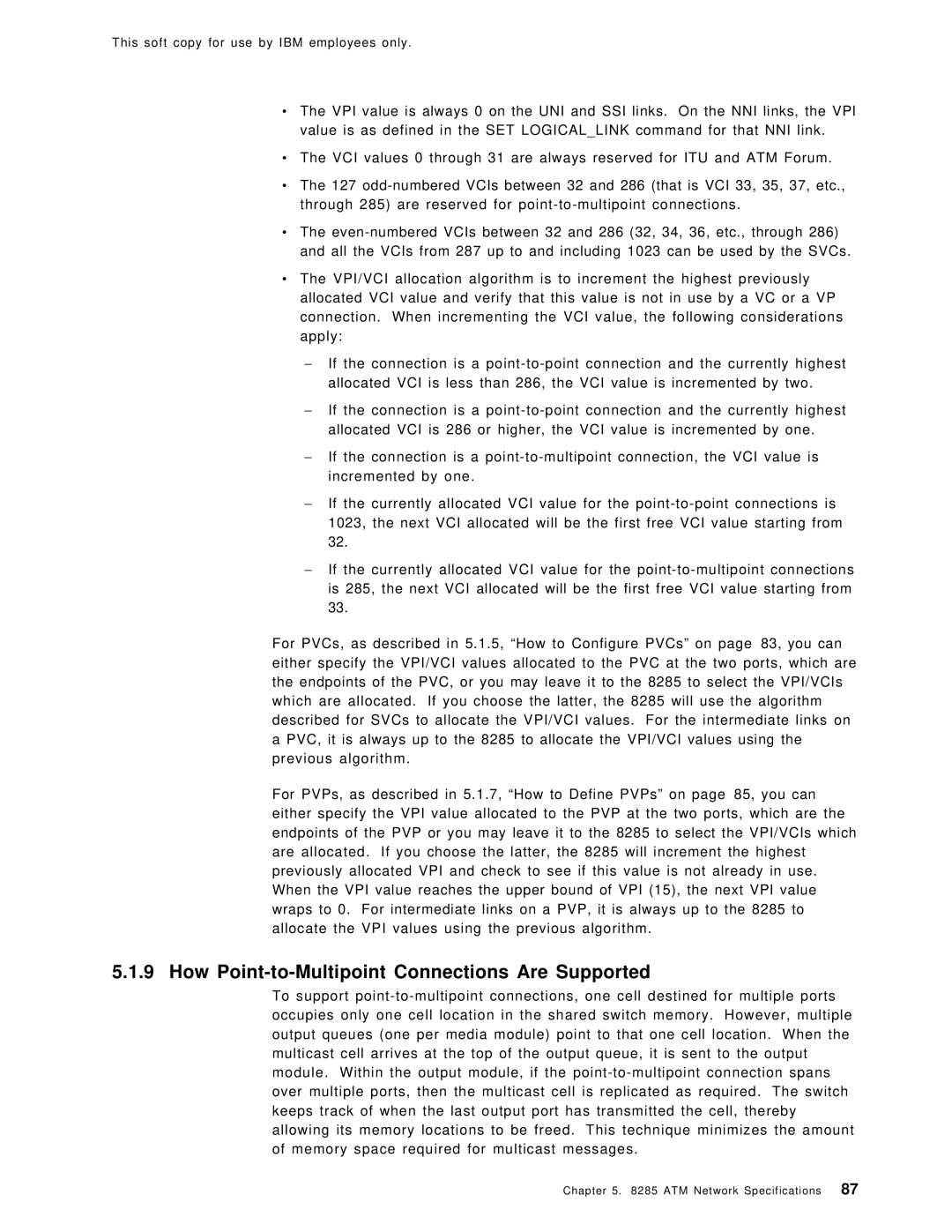This soft copy for use by IBM employees only.
•The VPI value is always 0 on the UNI and SSI links. On the NNI links, the VPI value is as defined in the SET LOGICAL_LINK command for that NNI link.
•
•
The VCI values 0 through 31 are always reserved for ITU and ATM Forum.
The 127
•The
•The VPI/VCI allocation algorithm is to increment the highest previously allocated VCI value and verify that this value is not in use by a VC or a VP connection. When incrementing the VCI value, the following considerations apply:
−If the connection is a
−If the connection is a
−If the connection is a
−If the currently allocated VCI value for the
−If the currently allocated VCI value for the
For PVCs, as described in 5.1.5, ªHow to Configure PVCsº on page83, you can either specify the VPI/VCI values allocated to the PVC at the two ports, which are the endpoints of the PVC, or you may leave it to the 8285 to select the VPI/VCIs which are allocated. If you choose the latter, the 8285 will use the algorithm described for SVCs to allocate the VPI/VCI values. For the intermediate links on a PVC, it is always up to the 8285 to allocate the VPI/VCI values using the previous algorithm.
For PVPs, as described in 5.1.7, ªHow to Define PVPsº on page 85, you can either specify the VPI value allocated to the PVP at the two ports, which are the endpoints of the PVP or you may leave it to the 8285 to select the VPI/VCIs which are allocated. If you choose the latter, the 8285 will increment the highest previously allocated VPI and check to see if this value is not already in use. When the VPI value reaches the upper bound of VPI (15), the next VPI value wraps to 0. For intermediate links on a PVP, it is always up to the 8285 to allocate the VPI values using the previous algorithm.
5.1.9 How Point-to-Multipoint Connections Are Supported
To support
Chapter 5. 8285 ATM Network Specifications 87
